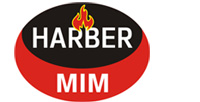Powder metallurgy is an industrial technology that uses metal powder or a mixture of metal powder (or metal powder and non-metal powder) as raw materials, and produces metal materials, composite materials and various types of products through forming and sintering. At present, powder metallurgy technology has been widely used in transportation, machinery, electronics, aerospace, weapons, biology, new energy, information and nuclear industries, etc., and has become one of the most dynamic branches in new material science. Powder metallurgy technology has a series of advantages such as significant energy saving, material saving, excellent performance, high product precision and good stability, which is very suitable for mass production. In addition, some materials and complex parts that cannot be prepared by traditional casting methods and mechanical processing methods can also be manufactured by powder metallurgy technology, which is highly valued by the industry.
The mixing of raw materials for powder metallurgy parts and the application of various components.
Harber Metal powder metallurgy parts production and manufacturing.
The mixing of raw materials for powder metallurgy parts is to mix two or more powders with different chemical compositions. The mixed powder is called mixed powder. Its quality will directly affect the intrinsic quality of powder metallurgy parts. Therefore, powder mixing is not only the raw material preparation before the pressing process production, but also the first process of powder metallurgy parts production, and it is the key process to ensure the material quality of the parts.
I. There are two basic requirements for the mixing of raw materials for powder metallurgy parts. 1. According to the material grade of the parts, the selected raw materials and additives (additives) should meet the quality requirements of parts production. 2. The mixed powder should achieve the best mixing uniformity, meet the required loose density and formability during pressing.
II. The requirements of powder metallurgy parts for raw materials. Generally, raw materials are iron powder copper powder stainless steel powder , copper powder.
Iron powder mainly has reduced iron powder and atomized iron powder. In addition, there are diffusion alloy powders, with alloy powders, etc.
a. When reduced iron powder and atomized iron powder are selected for parts production, different standards of iron powder are used according to the characteristics of the parts (such as bearings, gears, etc.). According to the material requirements of the parts, alloy elements (copper, nickel, molybdenum, etc.) powders can be added and mixed into mixed powders, which are generally used for low-medium strength structural parts.
b. When pre-alloyed powders are selected for parts production, because pre-alloyed powders are sintered or glued to bond alloy element (copper, nickel, molybdenum) powders on iron powder particles, they can greatly reduce the segregation of alloy powders, have good compressibility, stable sintering size, eliminate the diffusion lag caused by the need to reduce the oxide layer on the contact particle surface before sintering, and improve hardenability. Graphite and lubricants can be added and mixed. It is generally used for high-density, high-precision structural parts.
c. When diffusion alloyed steel powders with copper, nickel and molybdenum as the main alloy elements are selected for parts production, graphite powder (C) can be added or different amounts of pre-alloyed element powders (nickel etc.) can be added to improve the toughness and impact performance of the parts or perform heat treatment. It is generally used for high-strength, high-precision structural parts.
Copper powder mainly has atomized 663 , 6% tin , 6% zinc , 3% lead (non-environmental friendly tin bronze), the rest copper powder . Atomized 660 , 6% tin , 6% zinc (environmental friendly tin bronze), the rest copper powder . Atomized 9010 , 10% tin (environmental friendly tin bronze), the rest copper powder .
Stainless steel powders are divided into austenitic and ferritic types . Austenitic has good corrosion resistance , such as 316 , 304 , etc . Ferritic can be heat treated later , such as 430 , 434 , 410 , etc .
Learn more about mim materials:https://www.harbermetal.com/design-materials/













